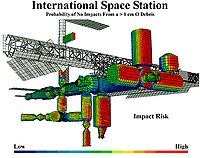
Photo from wikipedia
Major developments in the treatment of multiple myeloma (MM) over the past decade have led to a continued improvement in survival. Significant progress has been made with deeper and longer… Click to show full abstract
Major developments in the treatment of multiple myeloma (MM) over the past decade have led to a continued improvement in survival. Significant progress has been made with deeper and longer remissions seen with newer treatment approaches—both for induction as well as maintenance therapy. The treatment approach to MM is guided by several factors including patient age, frailty, comorbidities, eligibility for autologous stem cell transplantation (ASCT), and risk stratification into standard‐risk or high‐risk MM. High‐risk MM is defined by the presence of t(4;14), t(14;16), t(14;20), del (17p), TP53 mutation, or gain (1q). Transplant eligible patients should receive 4–6 cycles of induction followed by stem cell collection. Patients can then undergo ASCT, or continue induction therapy and shift to maintenance, delaying ASCT till first relapse. Transplant ineligible patients should receive induction therapy followed by maintenance. For induction therapy prior to ASCT, a proteasome inhibitor‐IMiD combination remains standard with monoclonal antibody‐based quadruplets preferred in high‐risk patients. Among transplant ineligible patients, those with standard‐risk MM should receive DRd continued until disease progression, while bortezomib containing regimens (VRd or VRd lite) can be considered for high‐risk patients. Finally, standard‐risk patients should receive lenalidomide maintenance after induction/ASCT, while proteasome inhibitor‐IMiD combinations should be used for high‐risk patients.
Journal Title: American Journal of Hematology
Year Published: 2022
Link to full text (if available)
Share on Social Media: Sign Up to like & get
recommendations!